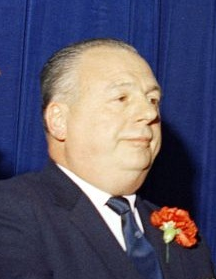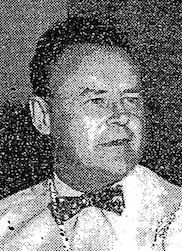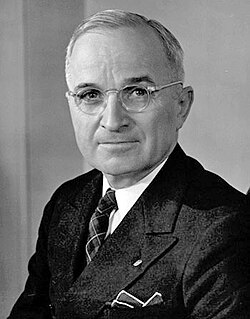Related Research Articles

The Office of Price Administration (OPA) was established within the Office for Emergency Management of the United States government by Executive Order 8875 on August 28, 1941. The functions of the OPA were originally to control money and rents after the outbreak of World War II.

The Mutual Security Act of 1951 launched a major American foreign aid program, 1951–61, of grants to numerous countries. It largely replaced the Marshall Plan. The main goal was to help poor countries develop and to contain the spread of communism. It was signed on October 10, 1951, by President Harry S. Truman. Annual authorizations were about $7.5 billion, out of a GDP of $340bn in 1951, for military, economic, and technical foreign aid to American allies. The aid was aimed primarily at shoring up Western Europe, as the Cold War developed. In 1961 it was replaced by new foreign aid program. The Foreign Assistance Act of 1961, created the Agency for International Development (AID), which focused more on Latin America.
The Economic Stabilization Act of 1970 was a United States law that authorized the President to stabilize prices, rents, wages, salaries, interest rates, dividends and similar transfers as part of a general program of price controls within the American domestic goods and labor markets. It established standards to serve as a guide for determining levels of wages, prices, etc., which would allow for adjustments, exceptions and variations to prevent inequities, taking into account changes in productivity, cost of living and other pertinent factors.

The Mutual Defense Assistance Act was a United States Act of Congress signed by President Harry S. Truman on 6 October 1949. For US Foreign policy, it was the first U.S. military foreign aid legislation of the Cold War era, and initially to Europe. The Act followed Truman's signing of the Economic Cooperation Act, on April 3, 1948, which provided non-military, economic reconstruction and development aid to Europe.

Michael Vincent DiSalle was an American attorney and politician from Ohio. A member of the Democratic Party, he served as mayor of Toledo from 1948 to 1950, and as the 60th governor of Ohio from 1959 to 1963.

Charles Edward Wilson was a CEO of General Electric.

Philip Murray was a Scottish-born steelworker and an American labor leader. He was the first president of the Steel Workers Organizing Committee (SWOC), the first president of the United Steelworkers of America (USWA), and the longest-serving president of the Congress of Industrial Organizations (CIO).
The Office of War Mobilization (OWM) was an independent agency of the United States government formed during World War II to coordinate all government agencies involved in the war effort. It was formed on May 27, 1943 by Executive Order 9347.
The Defense Production Administration (DPA) was an independent agency of the United States government for oversight and control of the defense production programs of the United States during wartime mobilization in the Korean War era.
The Office of Defense Mobilization (ODM) was an independent agency of the United States government whose function was to plan, coordinate, direct and control all wartime mobilization activities of the federal government, including manpower, economic stabilization, and transport operations. It was established in 1950, and for three years was one of the most powerful agencies in the federal government. It merged with other agencies in 1958 to become the Office of Civil and Defense Mobilization (1958–1961).
Nathan Paul Feinsinger was a professor of law at the University of Wisconsin Law School. He mediated and arbitrated a number of strikes, and served as general counsel to the Wisconsin Labor Relations Board and associate general counsel to the National War Labor Board (WLB).

Roger Lowell Putnam was an American politician and businessman. A member of the prominent Lowell family of Boston, he served as Mayor of Springfield, Massachusetts, from 1937 until 1943, and as director of the Economic Stabilization Administration from 1951 until 1952. During his short tenure in federal office, the nation's steelworkers struck—leading United States President Harry S. Truman to seize the nation's steel mills.

The 1952 steel strike was a strike by the United Steelworkers of America (USWA) against U.S. Steel (USS) and nine other steelmakers. The strike was scheduled to begin on April 9, 1952, but US President Harry Truman nationalized the American steel industry hours before the workers walked out. The steel companies sued to regain control of their facilities. On June 2, 1952, in a landmark decision, the US Supreme Court ruled in Youngstown Sheet & Tube Co. v. Sawyer, 343 U.S. 579 (1952), that the President lacked the authority to seize the steel mills.
Cyrus S. Ching was a Canadian-American who became an American industrialist, federal civil servant, and noted labor union mediator. He was the first director of the Federal Mediation and Conciliation Service (FMCS) and the Wage Stabilization Board.
The Office of Economic Stabilization was established within the United States Office for Emergency Management on October 3, 1942, pursuant to the Stabilization Act of 1942, as a means to control inflation during World War II through regulations on price, wage, and salary increases.
The Economic Stabilization Agency (ESA) was an agency of the United States Government that existed from 1950 to 1953.

The Stabilization Act of 1942, formally entitled "An Act to Amend the Emergency Price Control Act of 1942, to Aid in Preventing Inflation, and for Other Purposes," and sometimes referred to as the "Inflation Control Act", was an act of Congress that amended the Emergency Price Control Act of 1942.
Railway Labor Executives' Association (RLEA) was a federation of rail transport labor unions in the United States and Canada. It was founded in 1926 with the purpose of acting as a legislative lobbying and policy advisory body. At times, it played a prominent role in setting rail transport policy in the U.S., and was party to six U.S. Supreme Court cases. It disbanded in January 1997, with representation, collective bargaining, and legislative lobbying assumed by the newly formed Rail Division of the AFL-CIO Transportation Trades Department.
The National War Labor Board, commonly the War Labor Board was an agency of the United States government established January 12, 1942 by executive order to mediate labor disputes during World War II.
The presidency of Harry S. Truman began on April 12, 1945, when Harry S. Truman became the 33rd president upon the death of Franklin D. Roosevelt, and ended on January 20, 1953.
References
- ↑ "Executive Order 10161, September 9, 1950," John Woolley and Gerhard Peters, The American Presidency Project, no date.
- ↑ Peters, Gerhard; Woolley, John T. "Harry S. Truman: "Executive Order 9672 - Establishing the National Wage Stabilization Board and Terminating the National War Labor Board," December 31, 1945". The American Presidency Project. University of California - Santa Barbara.
- ↑ Wood, Lewis. "Stable Pay Board to Succeed NWLB." New York Times. January 1, 1946.
- ↑ The National Wage Stabilization Board, January 1, 1946-February 24, 1947..., p. 1.
- ↑ Loftus, Joseph A. "Voluntary Action for Labor Peace Stated As Policy." New York Times. December 16, 1946; Belair, Jr., Felix. "War Agencies Put in Unit By Truman for Liquidation." New York Times. December 13, 1946; "Truman's Statement and Order Consolidating War Agencies." Associated Press. December 13, 1946.
- ↑ Hogan, p. 353-355.
- ↑ Hogan, p. 344.
- ↑ "Everybody's Fight," Time, September 18, 1950.
- ↑ Marcus, p. 9-10.
- ↑ Pierpaoli, p. 145.
- ↑ Loftus, Joseph A. "Truman Establishes Agency To Bar Inflation as U.S. Arms." New York Times. September 10, 1950.
- ↑ "Bureaucracy in Blossom," Time, February 26, 1951.
- ↑ Loftus, Joseph A. "Truman Setting Up Price Unit with Ching Slated As Head." New York Times. September 30, 1950.
- ↑ Loftus, Joseph A. "Board of 9 Sworn As Pay Stabilizers." New York Times. November 29, 1950.
- ↑ Marcus, p. 24.
- ↑ "'Annual Budget Message to the Congress: Fiscal Year 1953.' January 21, 1952." John Woolley and Gerhard Peters, The American Presidency Project. Santa Barbara, Calif.: University of California (hosted), Gerhard Peters (database). No date. Accessed June 2, 2007.
- ↑ "Wage Board Rules in First Dispute." New York Times. October 20, 1951.
- ↑ Loftus, joseph A. "White House Ends All Wage Control, Many Price Curbs." New York Times. February 7, 1953.